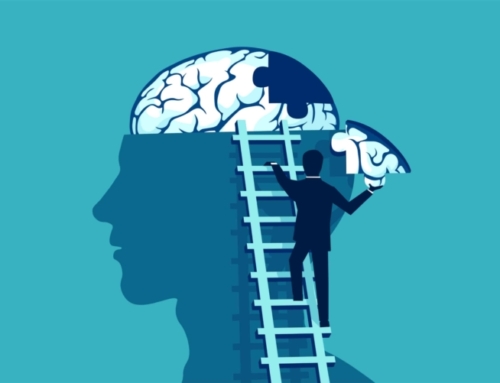I posit that the more clearly you define your clinical roles—and maintain flexibility around them to address individual patient’s needs across the course of treatment—the less stressed and more effective you will become. Of course, you already have a role and a name for it. You may be a psychiatrist, internist, therapist, surgeon, nurse, or one of many other names. Your professional degree, such as MD or DO, Ph.D. or Psy.D., RN, NP, MSW or DSW, and so forth, to some degree directs the role with which you choose to define yourself but does not constrain you from taking on additional roles. Along with your degree and title come years of training and clinical experience that contribute to your elaboration and understanding of your role. So, you already know who you are and what you do.
My point today is that within the scope of your degree, title, and how you already define your role, there remain additional options to consider. Adding to your primary role is the starting point of a perhaps more nuanced and comfortable sense of your stance towards and relationship with your patients. Below are some roles (which are not mutually exclusive) with brief descriptions. Irrespective of your degree and job title, consider how you react—in thought and feeling—to each of these to help guide you to your own role definition, one which you can then inhabit in your day-to-day patient interactions. This is a beginning exploration and I welcome comments and suggestions.
Doctor Role
A doctor diagnoses and cures and, for incurable illnesses, ameliorates symptoms and dysfunction associated with the underlying condition and, additionally, minimizes the progression of the disease and of its sequelae by minimizing or eliminating the contributors to the disease state and its sequelae.
The doctor’s role is comfortable for patients who regard their difficulties as biological conditions or due to ‘chemical imbalances.’ Also, because the doctor often is seen as less emotionally engaged while still being rationally engaged in the patient’s wellbeing, this role is comfortable to patients who seek greater interpersonal distance and who find it easier to share intimate details with someone who is rationally analyzing their problems and offering solutions rather than someone who is more interested in ‘getting to know’ them as a person. The ‘doctor’ is also often assumed to know how best to address specific problems, and patients comfortable with a professional in the doctor’s role expect to receive specific advice and a plan of action and less exploration and identification of the patient’s emotional needs.
Patients also expect a progression of interactions between themselves and the doctor that mirrors the progression of an illness. At the start of treatment, they often expect some intervention that noticeably decreases their distress and symptoms. If they receive such treatment, their confidence in the ‘doctor’ grows. If not, they may quickly lose confidence. Patients may also, not realistically, expect that their condition will be cured and, if not exactly cured, that the treatment will nevertheless come to an end. Thus, for patients with chronic or recurrent conditions, the ‘doctor’ may need to educate patients on the need for maintenance or follow-up treatment. Using analogies between chronic psychiatric disorders and chronic medical conditions, such as diabetes, may be useful and more easily assimilated by the patient.
Coach
A coach has a goal in mind, that of achieving the outcome that has been set beforehand. The coach is problem-solving and action-oriented. Problems are identified and characterized in detail in order to provide a plan of action for deploying solutions. Each session focuses on checking the status of the problem, progress towards the goals, and identifying barriers to progress. The coach is judgmental sometimes, but fundamentally supportive and doesn’t shy away from pushing, prodding, confronting, and exhorting the person coached to be their best self.
The coach’s role is comfortable for patients who are feeling overwhelmed and want someone else, someone they can trust, to take control and set out the plan for them. The ‘coach’ is expected to show confidence, speak with authority, and communicate that the patient’s problems are problems the coach has plenty of experience dealing with and resolving. The coach, because a coach is not a doctor, can more easily probe and address emotional and interpersonal relationship aspects of the patient’s life and draw connections between them and the patient’s mental health problems. The coach, despite a tough no-nonsense stance, is expected to betray a caring core and, in the service of showing this softness beneath a gruff exterior, should make occasional comments of concern and keep the patient in mind between sessions.
Guide
A guide, whether guiding their charge across a mountain pass, through a life crisis, or on a spiritual journey, is confident in their knowledge and skill that’s been gained from and tested through experience. The guide is both directive in terms of the overall goal of the journey and, to a considerable degree, of the path taken, but is also acutely aware that the journey itself is part of life and a benefit in itself and not simply a means to an end. Given the nature of the role, the guide has the twin goals of protecting the guided person from harm, including harmful decisions, while allowing them to make choices within constraints. The person undertaking the journey is encouraged to reflect on it, discuss it, gain insight from it, and develop new ways of living borne from it. A guide is less directive than a coach but more directive than a mentor.
The role of a guide is comfortable for most patients seeking mental health treatment. This role combines the confidence and directedness of a coach with the open-mindedness of a mentor. After all, many people experience mental health problems without knowing their causes or being able to define their nature. They may not have the vocabulary to put their distress and dysfunction into words nor the discernment to differentiate one form of experience from another. Thus, many people coming to treatment, when they are not currently in crisis, welcome an exploration of the causes, nature, and consequences of their mental health problems. They welcome open exploration with the goal of resolving their symptoms and dysfunction.
Mentor
A mentor takes a long view of the effects of their interventions even when the relationship with the person being mentored, called the mentee, is expected to be short. Within this perspective, the mentor realizes that the mentee has had a rich and varied life prior to their meeting and will have one after they part. The mentor wishes to use the time with the mentee to open opportunities for the mentee to think anew, and to explore widely and reflect deeply. The mentor trusts in the mentee’s current competencies and potential to lead themselves into new ways of living and, thus, takes a decidedly non-directive approach. In particular, the mentor is eager to engage the mentee in the exploration of the mentee’s explicit and implicit goals and values, drives, ambivalences and conflicted states, emotional and behavioral responses, and to search for patterns among the totality of these relationships. The mentor is comfortable maintaining the dyad in a state of uncertainty and ambivalence, seeing this state of suspended judgment as an opportunity to break from existing patterns of perception, thought, and behavior, and confident that something new of value will emerge from this transitional state.
The mentor shows patience, even when the going is rough, and the mentee may show signs of regression. Transitions are inherently destabilizing, and the mentor knows to both allow a certain amount of distress to arise during treatment and to maintain vigilance in drawing the dyad back into safety when the mentee is approaching the limit of their resiliency. The mentor rarely advises other than reminding the mentee to trust and deploy their own inner resources. The mentor is the least directive of the triad of coach, guide, and mentor. And least judgmental and most open to the nature of the outcome, realizing that sometimes even ‘failed’ engagements can bear unexpected fruit at a future time. The mentor hopes to plant seeds and allow the mentee to disengage and move forward on their own.
Patient and Clinician Factors Leading to a Choice of Roles
The roles I’ve delineated above are only a sample. There are many other roles that can be explored, for example, that of confidante, advisor, parental surrogate, etc. Some of these roles overlap with the ones I presented while others are distant from them.
The role that a clinician takes on should be guided by the individual patient’s needs and expectations while being constrained by the training and temperament of the clinician. Some may simply not have it in them to present as a prototypical ‘coach.’ This is fine if they realize that the patient may need a clinician who is more directive given the current state of the patient’s illness or because of the patient’s personality and attachment style and, thus, can meet the patient where they are and with what they need. Thinking through role possibilities and roles patients may benefit from, the clinician can set out to expand their repertoire of roles, even those that fall outside the clinician’s first nature or comfort zone.
Additionally, there are emotions and emotional expressions that may not be fully under voluntary control but nevertheless should be kept in awareness and possibly brought under voluntary control. For example, in my experience of viewing clinical interactions, it has been rather common that clinicians betray negative surprise or judgmental attitudes. Negative surprise is an expression of negative appraisal, such as, “You drink HOW MUCH each day?!” After that kind of response, how likely is it that the patient will be truthful in their reports of alcohol consumption? Not very. And regarding judgmental attitudes, there are behaviors some humans engage in that are universally considered to be bad or evil, such as murder. The clinician need not pretend that, in this case, the convicted murderer in treatment with them did not act in a reprehensible way. However, judgment can begin and end at the behavior and not extend to the person.
My Own Sense of Role(s)
I am a psychiatrist and my sense of being a doctor and more specifically, a psychiatrist, forms the foundation of my understanding of my clinical role. However, despite this role being foundational and, because of that, permeating all the other roles that I take on, I do layer other roles onto that one. In effect, my psychiatrist role continuously runs in the background but often remains unobvious. In my psychiatrist role, I feel comfortable with and am attuned to the biological aspects of the patient’s condition and treatment, the interplay of their psychiatric and medical conditions, their medication regimens and the medications’ side effects and consequences, and their physical signs and symptoms.
In addition, my more forward and obvious roles are that of coach, mentor, and guide. I find these terms point to roles that are both distinct and overlapping, so I’m not surprised that to some degree all of them fit me. In addition, each patient has different needs, so I adjust the role I take on with each patient.
Again, this is a beginning exploration. If you have anything to add or wish me to explore particular aspects, please drop me a note below.
Thanks,
Dr. Jack
Language Brief
“There’s the private persona and the public persona and the two shall never meet.” – Liev Schreiber
“I ran out of any type of persona. I just had to be me.” – Emma Chamberlain
“Almost every sane person is at least two different people.” – Mokokoma Mokhonoana
“The persona is a complicated system of relations between individual consciousness and society, fittingly enough a kind of mask, designed on the one hand to make a definite impression upon others, and, on the other, to conceal the true nature of the individual.” – C.G. Jung







Leave A Comment